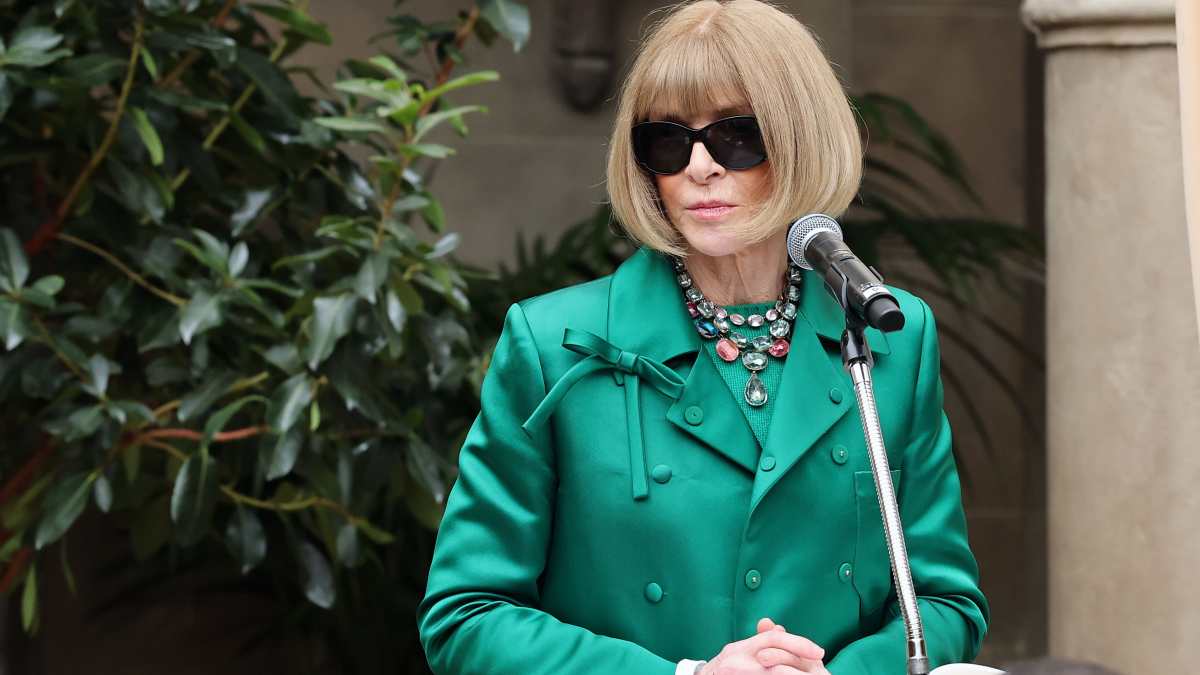Few names carry the weight in fashion that Anna Wintour does. With more than three decades at the helm of Vogue, she has shaped the global industry like no other. Now aged 75, the British-born editor has become a symbol of influence, discipline, and forward-thinking editorial leadership. From humble beginnings in London to overseeing content at Condé Nast globally, Wintour’s story is one of precision, evolution, and enduring relevance.
From London Roots to a Global Stage
Anna Wintour was born on November 3, 1949, in Hampstead, London. Her father, Charles Wintour, was a formidable newspaper editor, leading the London Evening Standard for nearly 20 years. Her upbringing was deeply tied to journalism and media, laying the foundation for her career. She attended North London Collegiate School but left formal education early, opting instead for hands-on experience in fashion retail and editorial training.
At 15, Wintour’s first job was at Bib, a trendy London boutique, arranged by her father. That early exposure to the fashion world fueled her ambition to blend fashion and media—a goal she would eventually accomplish on an unmatched scale.
Early Career Moves and Editorial Clashes
Wintour’s professional journey began at Harper’s & Queen in 1970, where she worked as an editorial assistant. Even then, she was known for being sharp, assertive, and unafraid to challenge norms. After disputes with colleague Min Hogg, she left the magazine and moved to New York in 1975, landing a role at Harper’s Bazaar as a junior fashion editor. Though she was fired within a year for pushing boundaries in photo concepts, she quickly rebounded.
She then joined Viva magazine as a fashion editor, but the publication folded in 1978. After a brief hiatus and a move between Paris and New York, Wintour returned to editorial work in 1980, this time with New York magazine. There, her distinct vision began to attract industry attention.
Her big break at Vogue came in 1983 when Condé Nast’s editorial director Alex Liberman offered her the role of creative director. She doubled her salary and brought a bold, innovative aesthetic to the publication. Two years later, she took over British Vogue, replacing the majority of the staff and earning the nickname “Nuclear Wintour” for her uncompromising leadership style.
Taking Over American Vogue
In 1987, she briefly led House & Garden, transforming it so aggressively that it was nicknamed House & Garment. Within ten months, Wintour was named Editor-in-Chief of American Vogue—a role she still holds.
From her first issue in 1988, Wintour made it clear she was not interested in sticking to tradition. She featured a model in $50 jeans and a $10,000 T-shirt on the cover—something previously unheard of. Her preference for real, candid photography and mixing high fashion with mass-market brands quickly redefined what a fashion magazine could be.
By 2004, Vogue‘s September issue hit a record 832 pages. During her reign, she also launched spinoffs including Teen Vogue, Vogue Living, and Men’s Vogue. Teen Vogue eventually outperformed major competitors in ad revenue and cultural impact.
Expanding Her Influence Beyond Vogue
Wintour was named Artistic Director of Condé Nast in 2013, later becoming Global Chief Content Officer in 2020. These roles expanded her creative control across the publisher’s vast network of magazines, solidifying her as one of the most influential media executives worldwide.
She also co-chairs the annual Met Gala, turning it into the fashion industry’s most anticipated event. Through initiatives like the CFDA/Vogue Fashion Fund, she has supported and mentored rising designers, giving them global platforms to succeed.
Wintour’s impact goes far beyond editorial decisions. Her strategic embrace of celebrity culture, inclusion of diverse voices, and early pivot toward digital platforms helped Vogue stay culturally and commercially relevant in an era of constant change.
Personal Life, Family, and Net Worth
Anna Wintour was married to psychiatrist David Shaffer from 1984 until their divorce in 1999. They have two children: Charles, born in 1985, and Katherine “Bee” Shaffer, born in 1987. Bee once contributed to The Daily Telegraph but chose not to follow in her mother’s professional footsteps.
In 2004, Wintour married Shelby Bryan, a business investor, although recent reports suggest the two have since separated. She resides in New York’s Greenwich Village and remains intensely private about her personal affairs.
As of 2025, Anna Wintour’s estimated net worth is $50 million, with an annual salary of $4 million from Vogue. Her wealth is not only from editorial positions but also from her extensive role across Condé Nast, appearances, and consulting projects.
Cultural Icon and Legacy
Wintour’s enigmatic presence—sharp bob, dark sunglasses, and decisive demeanor—became pop culture shorthand for power in fashion. Her former assistant, Lauren Weisberger, fictionalized her in The Devil Wears Prada, which was later adapted into a blockbuster film starring Meryl Streep. While the depiction was fictional, it cemented Wintour’s legend beyond the pages of Vogue.
Despite retirement rumors in the late 2000s, she remains at the top of her game. She’s received numerous accolades, including a Dame Commander of the Order of the British Empire, presented in 2017 at Buckingham Palace.








/socialsamosa/media/media_files/2zHb3sGz3BcGQQrVtOoh.png)
